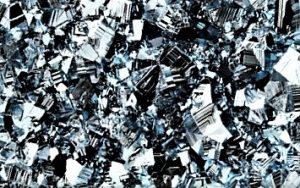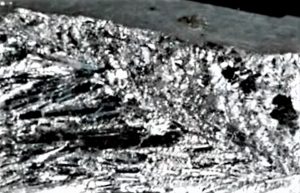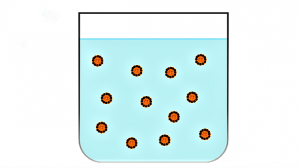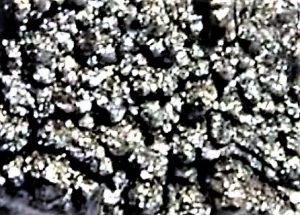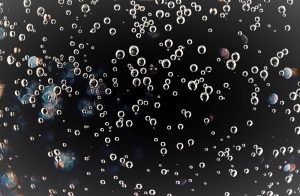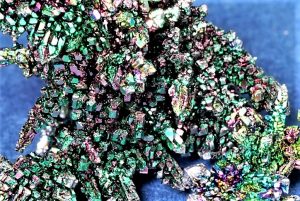Manganese
Manganese is a mineral element that is nutritionally essential and at the same time can become potentially toxic. Deriving its name from the Greek word magic is appropriate, because scientists are still working to understand the different effects of manganese deficiency and manganese toxicity on living organisms. It is one of the metals located in the transition group of the first long period of the periodic table and is located between chromium and iron, as it has properties in common with both metals. Although it is little known or used in its pure form, it is of great practical importance in steelmaking.
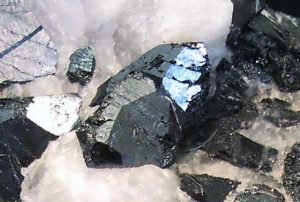
- Symbol: Mn
- Atomic number: 25
- Group: 7
What is manganese?
Manganese is a micro mineral considered essential, although its consumption needs are not very high. It is found in vegetable foods and is responsible for regulating the different reactions of the cells.
Characteristics
Its main characteristics are as follows:
- Its atomic number is 25.
- It has a valence of 2,3,4,6,7.
- Its oxidation state is +2.
- It has an electronegativity of 1.5.
- Its atomic radius (Å) is 1.26.
- Its electronic configuration is [Ar]3d54s2.
- It has an atomic mass (g/mol) of 54,938.
- Its density (g/ml) is 7.43.
- The boiling point is 2150° C.
- Its melting point is 1245° C.
- It oxidizes very easily in the air forming a layer of chestnut oxide.
- It is a very reactive metal.
- When heated with air or oxygen it forms a red oxide powder.
History
The origin of the name is a bit complicated to establish. In ancient times, there were two black Magnesia minerals called magnesia, but they were thought to be different in gender. Male magnesia attracted iron, and it was the iron ore now known as magnetite or magnetite, and that probably gave us the term magnet. Female magnesium ore didn’t attract iron, but it was used to discolor glass. This female magnesite was later called magnesia, now known as pyrolusite or manganese dioxide. In the 16th century, manganese dioxide was called manganese by glassmakers. Michele Mercati called black magnesia manganese, and finally the insulated metal is known as manganese. The name magnesia was eventually used to refer only to white alba magnesia or magnesium oxide, which provided the name magnesium for the free element when it was isolated. Egyptian and Roman glassmakers used manganese compounds to add or remove color from glass. Its use continued during the Middle Ages until modern times and is evident in the glass used in the 14th century in Venice.
Who discovered manganese
It was proposed for cataloguing as an element by Carl Wilhelm Scheele in 1774. The ore was discovered by Johan Gottlieb Gahn, a Swedish chemist, who discovered it by heating pyrolusite in the presence of coal that same year. Today, most manganese is still obtained from pyrolusite, although it is usually burned in an aluminum powder furnace or treated with sulphuric acid to form manganese sulphate, which is then electrolyzed.
Properties
It is an element characterized by its great hardness, by having quite high boiling and melting points and because it is a good conductor of electricity and heat. It can oxidize very easily when it is in the air forming an oxide layer.
What is it for?
It can be used in many applications, primarily to eliminate engine rattling, which is achieved by adding a manganese compound to unleaded gasoline. Another of its uses is in standard disposable batteries manufacturing and for iron and steel production. It can form alloys with aluminum and give rise to a more corrosion-resistant metal. Very useful in glass and ceramic coloring and in some countries is used in the manufacture of coins. It is essential for the proper development of human life, although in high concentrations it can be problematic for health. It ensures the proper development of bones, activates some enzymes of the body. It is linked to the synthesis of sexual hormones. It is necessary to assimilate vitamin E and B1 in the body. It participates in different organic reactions such as, for example, the synthesis of fatty acids and is also involved in the manufacture of cartilage.
Where is it found?
Manganese comes from pyrolusite, so it can be obtained from the combustion of this mineral. It cannot be found in its pure state in nature, only in meteorites. Most of the deposits are in Ponupo, East. In addition, it can be found in different types of food.
Foods containing manganese
The main natural sources of manganese are: dried fruits, sunflower and sesame seeds, whole grains found in breads, legumes such as beans, lentils, chickpeas and soybeans, green leafy vegetables, beet leaves, nuts, fruits such as peach, egg yolk, coffee and tea.
How to cite this article?
Briceño V., Gabriela. (2019). Manganese. Recovered on 3 January, 2025, de Euston96: https://www.euston96.com/en/manganese/



